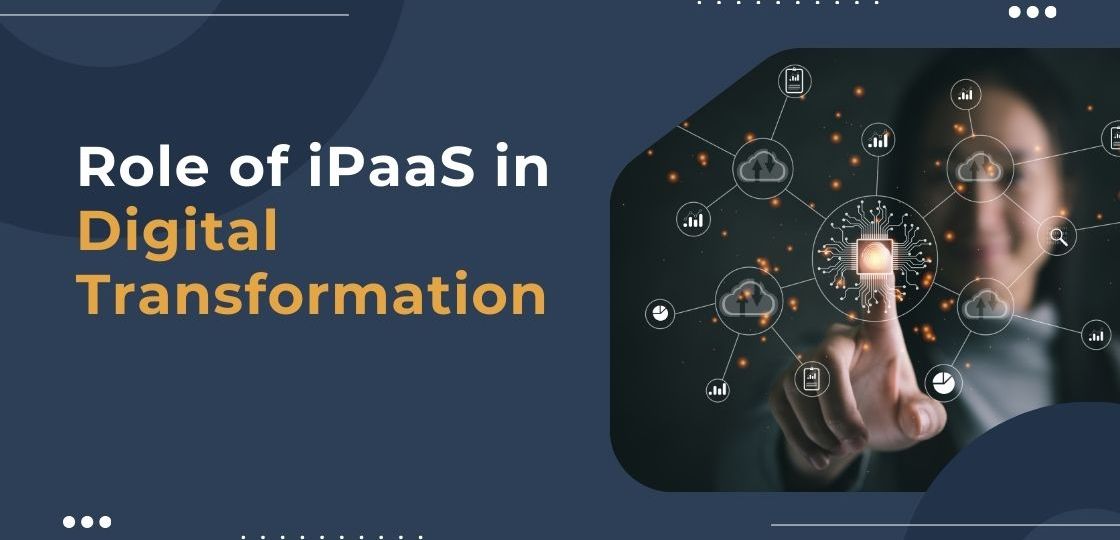
As the digital world world spins itself in new directions incredibly fast, companies must also transform to keep up. Customer wants, business needs and new technologies continue to rapidly change. To handle this, companies must adopt modern interconnected cloud systems. Not all of these may fit well with their older existing legacy systems. So, getting everything to work together can get seriously complex.
This is where iPaaS becomes extremely useful. iPaaS stands for “Integration Platform as a (software) Service”. It streamlines connections between new and old systems to share data smoothly. As digital change continues across industries, iPaaS is becoming the go-to platform to manage linking very intricate technology combinations. Proprietary enterprise software development has seen its day for all hut the most niche requirements.
This article explains why iPaaS now plays a central role in companies’ digital transformation. It connects & interconnects digital developments & innovative uses whilst at the same time has the unique ability to ‘talk’ to legacy systems on outdated foundations.
What Digital Transformation Involves
Digital transformation means companies adopt new technologies such as:
- Cloud computing
- Plug-and-play apps
- On the move mobile functionality
- Security & user controls
- Big data analytics
- AI and machine learning
- Internet of Things (IoT)
- Automating processes
- Predictive analytics
- Dynamic live reporting inc error reports
The goals are to:
- Streamline workflows
- Ensure accurate timely information
- Deliver better customer experiences
- Motivate employees to be more efficient
- Optimize operations to reduce costs
- Innovate – delivering the springboard for innovation
Challenges in Connecting New and Old Systems
New systems continue to be developed to ensure they work with old legacy systems. Though legacy systems in a world of cloud computing has manifest issues:
- Companies continued use of on-premise servers mixed with cloud platforms and SaaS apps adds unnecessary costs and complexity
- Cross-over data between new and old gets fragmented across different systems, hampering accurate validated reports
- Too many mixed analogue / digital interfaces make transparency and auditing data flows more complex
The answer, robust connectivity is needed to make the technology landscape work together from the start with an eye on progressively phasing out legacy systems. iPaaS solutions effectively provide the critical integration & migratory pathways.
iPaaS – The Connectivity Backbone for Digitalisation

An Integration Platform-as-a-Software-Service fundamentally serves as cloud-based middleware to connect diverse endpoints within an organization’s technology ecosystem seamlessly. Key capabilities include:
Prebuilt Connectors
1000s of pre-configured connectors eliminate the need for custom coding to link popular software systems, cloud platforms and on-premise setups. Plug-and-play.
Integration Flow Design
User-friendly visual tools allow graphical mapping of integration logic through dragging-dropping components without extensive coding.
Process Automation
Inbuilt orchestration facilitates the scheduling and automation of data transfers as per preset triggers or rules for hands-off processing.
API Management
Centralized access control, governance and analytics for API ecosystem to harness complexity.
Real-time Monitoring
In-depth tracking of integration workflows provides visibility regarding data latency, errors, etc, enabling proactive response.
Scalability
Flexible processing capacity allows seamless support of organization-wide connectivity growth without infra bottlenecks.
Equipped with these features, iPaaS empowers enterprise-grade integration critical for digital transformation.
Unlocking Key Digitalisation Capabilities
Beyond fundamental connectivity, iPaaS unlocks several pivotal digitalisation capabilities:
1. Hybrid Cloud Adoption
Linking legacy systems with private and public cloud environments for unified data access despite underlying technology diversity.
2. SaaS Ecosystem Integration
Establishing coordination between multiple SaaS systems (CRM, HCM, etc) through common identity, access and data exchange layers.
3. Analytical Consolidation
Aggregating scattered data across operational silos into unified enterprise data lakes and warehouses for consolidated analytics and insights.
4. Supply Chain Modernisation
Connecting inventory management systems, logistics platforms, procurement tools and supplier networks into an end-to-end digital supply chain.
5. Multi-Channel Experience
Orchestrating customer engagement across web, mobile, in-store and service channels through real-time data synchronization and event propagation.
This exemplifies iPaaS’ indispensable role as the cornerstone, allowing composite components of digital transformation strategies to align into a cohesive and high-performing whole.
Key Selection Criteria for an Enterprise iPaaS
However, the surge in cloud-hosted integration platforms also calls for rigorous evaluation of solution suitability based on the following:
- Prebuilt Connectors: The range of platforms supported out-of-the-box without custom coding minimizes deployment overheads.
- Automation & Orchestration: Embedded tools to visually design and automate multi-step processes enhance productivity while reducing reliance on IT resources.
- Hybrid & Multi-Cloud Scope: The ability to uniformly integrate on-premise systems, private cloud as well as leading public clouds expands deployment flexibility critical for most enterprises.
- Data Management & Analytics: Advanced data replication, preparation and analytics functions allow unified insights from integrated sources.
- Monitoring & Reporting: Robust dashboards indicating workflow metrics and alerts across the connectivity ecosystem enable administration simplicity and uptime.
- Security: Encryption, user access controls and data masking safeguard information flow, giving deep organizational access to iPaaS solutions. Evaluating product capabilities against integration use cases and future objectives provides clarity regarding platform scalability and viability over long-term digitalisation roadmaps.
Where Does iPaaS Fit?
Stepping back, organizations need to recognise Integration Platforms-as-a-Service as just one piece of the digital transformation puzzle – albeit a crucial one. An interconnected suite of technologies needs assembly:
- Core Digitalisation Technologies: This includes foundational platforms like cloud computing, IoT, data and analytics, artificial intelligence, etc, tailor-made for use cases.
- Legacy Modernisation Tools: Solutions to retain value within existing systems while positioning them for interoperability.
- Organizational Transformation Triggers: Catalysts like process reengineering, upskilling staff and instilling culture innovation prompting evolution.
An effective integration fabric thus serves to securely bind such transformation investments into a high-value modern ecosystem primed for responsiveness and growth.
Future Trajectory of iPaaS Adoption
Digitalisation compulsion faced by modern-day enterprises implies integration challenges will inevitably intensify as technology landscapes become more composite. Higher adoption levels will be fueled by iPaaS solutions extending their out-of-the-box integration coverage through AI to automate connectivity configurations. Cloud marketplace delivery models also promise to boost accessibility for enterprises worldwide. Indeed, integration technology and organizational change are set to advance in lockstep into the future.
